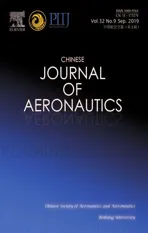Sealing reliability modeling of aviation seal based on interval uncertainty method and multidimensional response surface
2019-10-26BopengLIAOBoSUNYuLIMeichenYANYiRENQingFENGDezhenYANGKunZHOU
Bopeng LIAO, Bo SUN, Yu LI, Meichen YAN, Yi REN, Qing FENG,Dezhen YANG,*, Kun ZHOU
a School of Reliability and Systems Engineering, Beihang University, Beijing 100191, China
b Southwest Technology and Engineering Research Institute, Chongqing 400039, China
KEYWORDS Aviation seal;Interval uncertainty method;Multidimensional response surface;Sealing reliability;Small-sample parameters
Abstract Many variables affect the sealing performance, and their distribution characteristics are difficult to obtain with probabilistic methods owing to the high cost involved.Numerous problems in engineering are similar due to the appearance of small-sample parameters.In this study,the sealing reliability of an aviation seal was defined as the research object, and an interval uncertainty method and multidimensional response surface were proposed to calculate the sealing reliability.Based on this,we first analyzed the failure mechanism of the aviation seal and established a leakage rate model. Then, based on the non-probabilistic interval model, an interval uncertainty method was proposed to construct the analytical model. With reference to the limit state equation from the structural reliability theory,the multidimensional response surface was used for fast calculation.Then,we chose the single-cylinder gas steering gear used in aircraft as the case study,its sealing reliability in working and non-working statuses were calculated, and the results were verified with the actual maintenance records.By analyzing the sensitivity of some variables,we can improve the sealing reliability of the aviation seal by improving the surface roughness only if the cost allows.Finally, we consider that the method proposed in this study realizes the application of smallsample uncertainty analysis in reliability analysis,and could provide a feasible way to solve the similar problems in engineering with multidimensional and small-sample parameters.
1. Introduction
Sealing reliability is the capability of a sealing system to maintain an effective seal and lower than the specified leakage rate during the required working hours. Thus, the leakage rate is usually used as a quantitative indicator to measure the sealing performance.1-3The rubber O-ring seal has a wide range of applications in sealing systems and, as a major component, it plays an important role.4,5With the development of the aviation industry, its application in aircraft has increased significantly. The aviation seal may leak under corrosion,overheating,wear,etc.and study on the seal failure mechanism can help to reduce the accidents caused by leaks. A steeringgear failure will cause the aircraft to lose control of the rudder surface,which will lead to an accident.The aviation seals used in the gas steering gear are mostly O-shaped and, because of the cost, it is difficult to carry out with them large-sample experiments, so we can study the variables modeling method for the small-sample condition. The sealing performance is very important for aviation seals and it is affected by numerous variables during operation. These variables are often small-sample parameters. Therefore, the study of the sealing reliability of aviation seals by taking the leakage rate as the failure criterion of sealing performance, can provide the basis for improving the seal performance.
The contribution of reliability to system safety and its role within system risk analysis are important.6In the existing research on sealing performance, the leakage rate of gas is affected by factors such as air pressure,temperature,and sealing surface,and the relationship between these factors and the leakage rate is always nonlinear.7Pressure and temperature,among other factors may be subject to a random distribution or change over time,and the accuracy of their quantification will have an impact on the accuracy of the leakage rate calculation. Therefore,the calculation of leakage rate based on the accurate quantification of these uncertain variables to obtain the sealing reliability of an aviation seal, is a difficult problem that needs to be solved.Until now,numerous studies have conducted a preliminary analysis of the relationship between the leakage rate and its influencing factors.Xuan et al.8studied the wear degradation of aviation seals. Kumar and Bergada9analyzed the effect of piston grooves on leakage rate. Chen et al.10studied the measurement method of leakage rate and the quantification method of sealing performance.Yan et al.11deduced the calculation formula of the seal gap and calculated the value of leakage rate under certain operating conditions. Zhou et al.4and Liu et al.12analyzed the pressure difference on both sides of the Oring,and the influence of the geometrical parameters on sealing performance by simulation and numerical methods, respectively.Liang et al.13and Hu et al.14studied the variation of sealing performance under the combined effect of rubber material properties and geometry of the sealing structure. Park et al.15and Shen et al.16studied the response model of sealing performance from the distribution of stress on the sealing surface.To ensure accuracy, these studies are using the probabilisticbased model to quantify the uncertainty variables, and thus,they provide a basis for analyzing the influence of these uncertainty variables on leakage rate.However,the factors they have been considered are too few to fully describe the mathematical relationship between the variables and leakage rate. Besides,not all the uncertainty variables can easily be obtained from large sets of sample data.Under small-sample parameters,the analysis process of the probabilistic-based model will lead to large deviations,and will even be unable to obtain the distribution characteristics of the variables.17,18
Therefore, it is necessary to conduct a further study on the quantification of uncertainty variables and the evaluation method of sealing reliability. To model the uncertainty variables and analyze the reliability,Tang et al.19used an evidence theory, Takano et al.20proposed a stochastic model, Wang et al.21and Guo et al.22,23adopted the Bayesian method,Riascos-Ochoa et al.24based the study on the Le´vy process,Abdessalem and Ei-Hami25used the local surrogate model.Besides,there are imprecise stochastic model,26,27combination method,28multiple response surface methods based on variable sensitivity.29However, all these methods are applicable to cases with large samples, this is the deterministic method,and thus, a new analysis method is needed owing to the small-sample parameters that occur in engineering. To this end, Zhang30proposed an imprecise probability-based method, Reid31selected the probabilistic confidence method,both of them can model the uncertainty variables and analyze the sealing reliability. Nevertheless, when the sample type is multiple and the sample sets are small, the use of these methods will lead to great computational complexity.
The interval model has a strong universality regarding uncertainty parameters with multiple types and small samples.32,33Although the interval model was proposed very early,34,35it had not been applied to engineering until recently.36-41For the process of analyzing uncertainty variables with the interval model, the parameter perturbation method,36mixed uncertainty model including the interval and stochastic models38,42and interval model based on imprecise probabilities,39among other methods, can be employed.However,sealing reliability is a manifestation of performance,and Hua et al.43proposed a performance reliability evaluation method based on the failure threshold. Sealing reliability is also a kind of performance reliability, and its leakage rate can also be described by the failure threshold. Based on this,by combining the performance reliability evaluation method and non-probabilistic interval model and considering the working characteristics and influencing factors, an interval uncertainty method was proposed to analyze the sealing reliability of the aviation seal,to meet the accuracy requirement of sealing reliability under the influence of multi-type and smallsample parameters.
This paper combines the sealing failure mechanism, smallsample parameter modeling and performance reliability analysis method, and considers the life cycle of the aviation seal,which reduces the error of the small-sample uncertainty variable on reliability calculation. On this basis, first, the failure mechanism of an aviation seal will be analyzed to obtain its leakage rate model. Second, based on the non-probabilistic interval model, an interval uncertainty method will be proposed to model the sealing reliability, and the multidimensional response surface will be used to calculate the sealing reliability. Third, the gas steering gear of an aircraft will be selected as the case study object to verify the proposed method.Finally, the sensitivity of some variables will be analyzed and the optimization method from a technical perspective will be proposed. The adaptability of the proposed method will also be discussed, and some conclusions will be drawn.
2. Sealing failure mechanism and model
2.1. Sealing failure mechani sm
Based on the failure mechanism of seals,7,44the sealing performance of the aviation seal studied in this paper, is mainly achieved by the mutual compression between the rubber material and the sealing structure.This contact surface is called the sealing surface. The sealing performance is reflected in the degree to which the rubber material fills the depression of the cylinder surface when the rubber material and the cylinder are pressed against each other. The part of the depression in the cylinder surface that is not fully filled with rubber material forms a gas leakage passage, which results in the leakage of gas.45
According to the conclusions of exiting studies,7,44,11the micro-scale air leakage channel formed on the sealing surface constitutes the leakage path of the sealing surface. Further,the source of the leakage path is the micro-groove left on the cylinder surface owing to the process limitations during surface machining.46As shown in Fig.1,W is the length of the sealing surface, and D is the outer diameter of the sealing surface.Based on the statistical measurements of machined surfaces,7more than 90% of the surface micro-grooves have a slope of α=1°-4°, and the length of the leakage path is equal to the width of the sealing surface. Accordingly, most of the micro-grooves on the cylinder are of triangular shapes, and the isosceles triangle has the advantage of reducing the computational complexity. Although a few micro-grooves are trapezoidal or of other shapes, the micro-grooves of these shapes are really very few,thus,neglecting or treating them as isosceles triangles will not have an obvious effect,and there is a great need to reduce the computational complexity. Therefore, to reduce the calculations, we assumed that there is an isosceles triangle with a constant cross-sectional area and a base angle α on the cylinder side of the sealing surface,which forms a triangularly shaped column hole with a length W,and the height of the hole can be effectively applied to the leakage rate model as an interval variable, this is beneficial. In this way, the total leakage rate of the sealing structure is formed by the parallel connection of n such triangularly shaped holes, as shown in Fig.2.The presence of these holes leads to leakage in the sealing structure, which leads to failure.
2.2. Leakage rate model
The molecular flow theory is generally used to calculate the gas diffusion under micro-scale conditions and has many applications in gas flows with micro-to-nano-pores.As the geometry of the leakage path in the sealed state is of small to micro scale,and the leakage of gas from the hole meets the condition of a molecular flow, the leakage rate model needs to be based on the molecular flow assumption.47,48Furthermore, because the aviation seal is O-shaped, the gas leakage rate can be calculated according to Eq. (1).
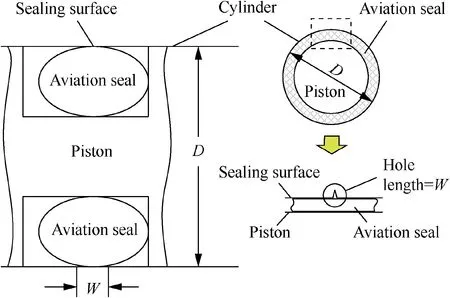
Fig. 1 Leakage behavior of an aviation seal.

Fig. 2 Holes on the cylinder.

where Q is the leakage rate of the gas(Pa·m3/s),C is the conductance of all leakage channels(m3/s),and Δp is the pressure difference of the gas on both sides (Pa).
For the aviation seal here studied, the above equation was corrected, and the conductance of a single hole can be calculated by Eq. (2). For it, the volume velocity of the gas flowing from the strong side to the weak side through these holes when the sealing surface is pressed under the gas at both sides.

where K is the shape correction factor,A is the cross-sectional area of the hole(m2),B is the perimeter length surrounding the hole (m), W is the length of the hole, which is consistent with the contact width of the sealing surface(m),and, v-is the average velocity of gas molecules and can be obtained by Eq. (3).

where R is the universal gas constant (J/mol·K), T is the gas temperature (K), and M is the molar mass of the gas (g/mol).For a cross section with base angle α, height h, and length W,we can obtain the conductance by Eq. (4).

From Section 2.1, the outer diameter of the sealing structure is D, and the number of holes on the sealing surface is n, then,

where H is the height (m) of the hole at the initial state (when the aviation seal is uncompressed), and its value is related to the roughness of the cylinder surface. The total conductance of the aviation seal is as expressed in Eq. (6), which combines Eqs. (4) and (5).

It is known from Ref. 49 that:

where σmis the average contact stress on the sealing surface(Pa)and Ksis the sealing performance coefficient of the softer contact material. The distribution of the contact stress on the sealing surface is parabolic50and can be expressed as:

where σ x( )is the distribution of the contact stress on the sealing surface, σmaxis the maximum contact stress on the sealing surface, and W is the width of the sealing surface. Then,

In summary, the leakage rate model of the aviation seal is:

2.3. Non-probabilistic interval model
In structures with random,unknown-but-bounded,and smallsample parameters,51the applicable conditions for calculating reliability by the probability-based method are often difficult to satisfy.17For this reason, the non-probabilistic interval model was proposed, with which numerous scholars have researched and achieved results.37-39,52,53
Considering the uncertainty parameters shown in Fig. 3, it is obvious that the experimental value with such small-sample parameters is characterized by randomness.The use of a probabilistic model for the analysis of the parameters whose distribution characteristics are not known will lead to inaccurate results, and in the assumptions of possible distributions will exist subjective factors.However,in relation to the distribution function of the uncertainty parameters,their intervals are easy to know. As expressed in Eq. (11), the uncertainty parameter was represented by a bounded interval with the help of interval mathematics,and the uncertainty parameter was replaced with the interval number for the reliability analysis, which is the basic idea of the non-probabilistic interval model.35

where XIis the interval number of the uncertainty parameter X, XLand XUare the lower and upper bounds of X, respectively, and x is the experimental value of X.
As expressed in Eq.(12),calculating the reliability based on the non-probabilistic interval model requires replacing the uncertainty variable with an interval number in the limit state equation. The multi-interval domain is formed by the interval with n uncertainty variables, and the probability that the limit state equation satisfying Z ≥0, is the reliability, as expressed in Eq. (13).where X1,X2,···,Xnare the n uncertainty variables,XI1,XI2,···,XInare the intervals of the n uncertainty variables,prob ·{}is the probability of the event,and R is the reliability.

Fig. 3 Distribution of uncertainty parameters.

3. Interval uncertainty method for sealing reliability
3.1. Multidimensional parameters of leakage rate model
According to Eq.(10)in Section 2.2,there are 12 parameters in the leakage rate model. The discreteness of these parameters varies, and the information of each one of the parameters is presented in Table 1. This paper is mainly to solve the conditions that cannot obtain the large-sample experimental data in engineering.Among them,M is the molar mass of a mixture of gas and air,and the molar mass of air is generally taken as the value of M because the proportion of gas is much smaller than that of air. Besides, W is not a discrete variable because the contact width of the sealing surface is only related to the initial compression.54In addition, parameters related to working conditions, such as pressure difference, temperature, contact stress on both sides, are taken as the key parameters.
Not all the parameter of the leakage rate model will vary with the operational and environment condition,and it is obviously that only 4 of the 12 parameters may be that. How to determine the change rules of these parameters needs to be analyzed in the subsequent work in conjunction with the technical manual of the gas steering gear.In addition,the source of these intervals or values are different, the material propertiesrelated parameters are often derived from the material manual,the process-related parameters are often derived from the performance of production equipment or monitoring the production samples, and the known parameters are derived from the existing studies.
Based on Table 1, the leakage rate model is a multidimensional model with six uncertainty parameters,and it has strong nonlinearity. Under the multidimensional and nonlinear conditions,we need to choose a suitable method to model the sealing performance of the aviation seal, then calculate its sealing reliability using the performance reliability evaluation method,43and then derive its safety life cycle to reduce accidents.
3.2. Interval uncertainty modeling under small sample parameters
Under the condition of small-sample parameters, with reference to the limit state equation in the structural reliability theory, the uncertainty variables are replaced with interval numbers55to establish the sealing performance model. The interval of these uncertainty variables constitutes a hypercuboid in the multidimensional coordinate system, and this hyper-cuboid is divided into a safe domain and a failuredomain by the function Z=g(X1,X2,···,Xn)=0, where Z=0 is called the failure surface, the area satisfying Z >0 is the safe domain, and the area satisfying Z <0 is the failure domain.

Table 1 Parameter information of leakage rate model.
As shown in Fig.4,the safe and failure domains constitute a two-dimensional interval domain divided by a failure surface. At this time, the reliability is the ratio of safe domain to total area. Moreover, the reliability is the ratio of the hyper-volume of safe domain to the total hyper-volume when the interval domain is multidimensional.
Combining Eqs. (10)-(12) and using the interval numbers instead of the uncertainty variables in the leakage rate model,the interval uncertainty model for sealing reliability of an aviation seal can be obtained as in Eq.(14).There are six interval numbers and six constants,and the failure surface is expressed in Eq. (15).
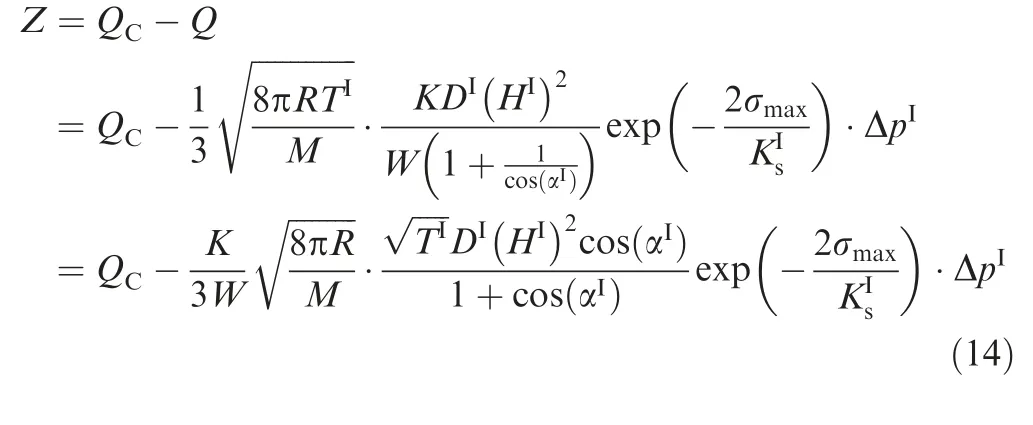
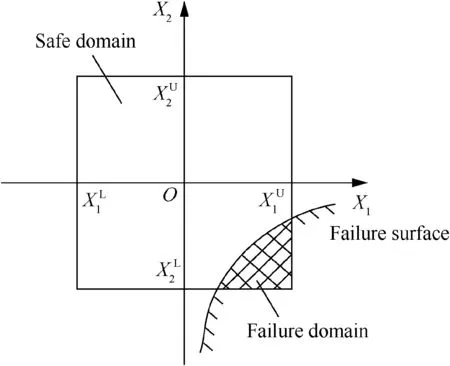
Fig. 4 Two-dimensional interval domain.

where QCis the maximum leakage rate allowed by the sealing structure.
According to Eq.(14),the six interval numbers correspond to six intervals,and these intervals can form a six-dimensional hyper-cuboid in the six-dimensional coordinate system.By calculating the hyper-volume of safe domain and the hypervolume of hyper-cuboid, the sealing reliability can be calculated by Eq. (16).

3.3. Multidimensional response surface
Based on Eqs. (12) and (13), the area of safe domain can be easily obtained by double integral when there are only two uncertainty variables in the limit state equation, and then the reliability can be calculated. However, as indicated in Eq.(14), the leakage rate model of the aviation seal constitutes a six-dimensional response surface and the six-dimensional integration method has a large complexity because it has a strong nonlinearity.This will have a great impact on the accuracy and efficiency, and it is not conducive to a rapid determination of the leakage rate.
Therefore,it is necessary to propose a method for this multidimensional response surface.Based on the method for solving the reliability by the interference of two random variables56combined with the characteristics of the multidimensional response surface, a modified Monte Carlo method was proposed.

4. Case study and discussion
4.1. Case description
In order to verify the proposed interval uncertainty method,the single-cylinder gas steering gear used in aircraft was selected as the research object. We chose this component as the research object in this study because it is impossible to conduct large-scale experiments on gas steering gears owing to factors such as time and output,and only a small sample data can be obtained.The aviation seal is as shown in Fig.6.This study analyzed the sealing reliability with the rubber material at different ageing levels, and both the working and non-working statues were set. The effect of ageing of the rubber material on reliability is cumulative because the accumulation of the degree of ageing leads to a reduction in the contact stress,which in turn leads to a decrease in sealing performance and ultimately affects the reliability of the aviation seal.
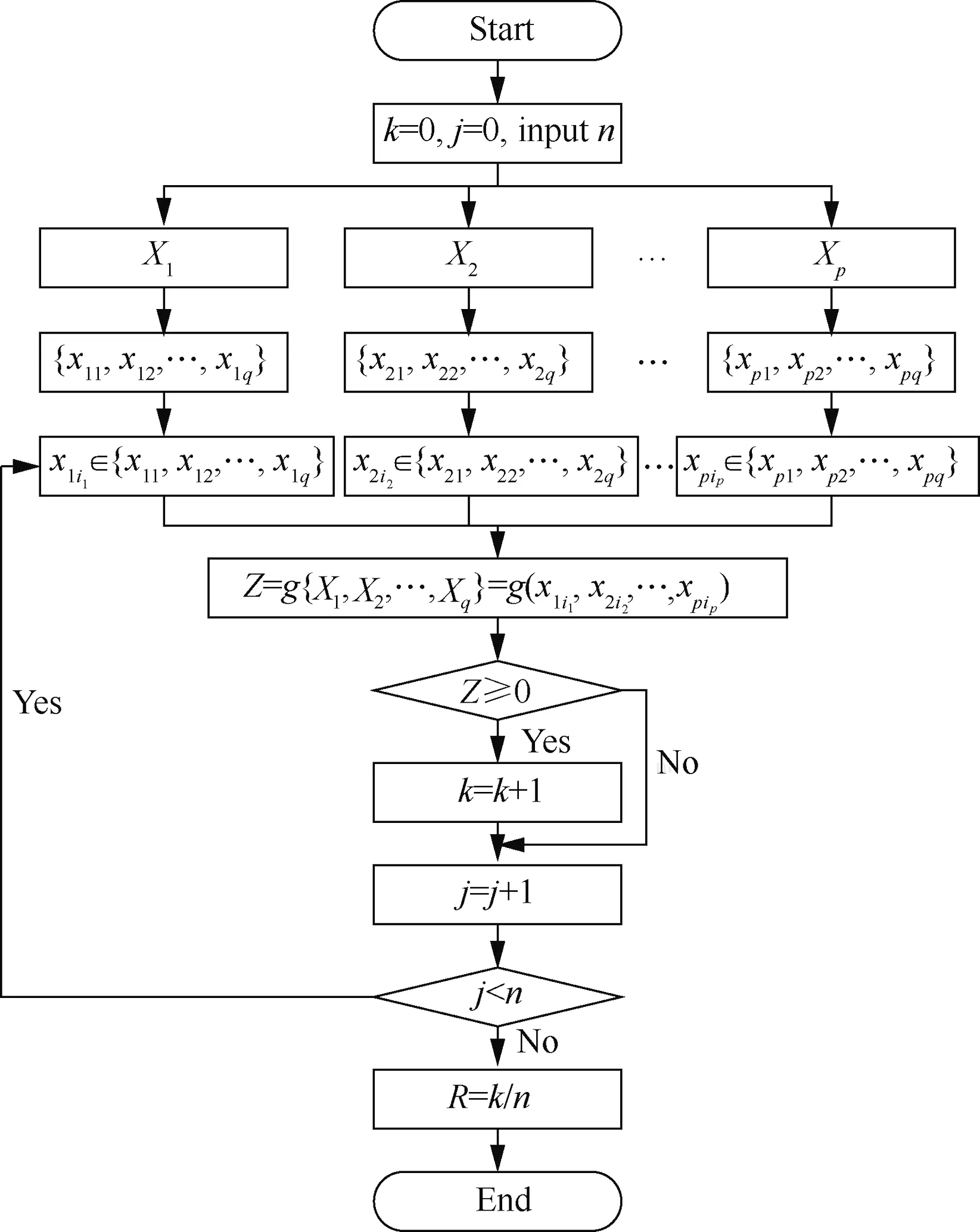
Fig.5 Flow chart for solving multidimensional response surface.
According to the technical manual of the gas steering gear and the material manual of the aviation seal, combined with Fig. 2 and Table 1, the value of constants and the interval of uncertainty variables were obtained and are listed in Tables 2 and 3, respectively, where I. means working status and II.means non-working status. From which we know that the working condition will influenced the aviation seal on the operational temperature and the pressure difference between the two sides. And, the environmental condition will mainly have reflected in the aging of the rubber material of aviation seal,the aging may reduce the average contact stress and the width of contact surface, these two parameters will be calculated by experiment and simulation in the next section.
The working and non-working statuses are set as comparisons to analyze the influence of the operation on reliability and to better understand the sensitivity of parameters. It can be seen that temperature and pressure in the working status(the actual situation)are higher than in the non-working status(the storage situation),and thus,the actual situation of the gas steering gear is much more difficult than when it is stored.Variables related to the working status, T and Δp, will show its accumulative damage through experiments and simulations.Other variables, W and σmax, accumulate as the cumulative time increase. Residual variables such as D, H, and Ks, which are independent of the accumulation with the operational time and environmental change. Therefore, we take the cumulative damage of rubber material and it's resulting in contact stress decrease as the accumulation of the failure process of aviation seal. Moreover, for the pressure difference and temperature distribution, they are based on the changes in pressure and temperature during the operation, the interval variables can be selected to describe their possible values.
Then,a finite element analysis was performed on the sealing structure of the gas steering gear. For safety reasons, D takes the maximum value when constructing the finite element models,that is,the outer diameter of the aviation seal is 0.01533 m and the compression is 0.00038 m. The parameters of rubber material used in aviation seal, C10and C01at different times,can be obtained by the degradation experiments (the degradation experiments in Ref. 54, and then be subjected to the iterative simulation analysis.
4.2. Results
After the finite element analysis for the aviation seal, the contact width and maximum contact stress were obtained, as shown in Fig. 7. The figure separately shows the mesh (left)and the contact stress contour (right) at the initial moment(No.1 in Table 4).Then,the contact width and maximum contact stress were calculated at other times in sequence, and a total of 12 groups of contact width and maximum contact stress were obtained,as listed in Table 4.Again,it was verified that the width of the contact surface was only related to the initial compression.

Fig. 6 Aviation seal of a steering gear.

Table 2 Values of constants.

Table 3 Intervals of uncertainty variables.
Finally, based on the value or the interval of the above parameters, the multidimensional response surface in Section 3.3 was used to calculate the sealing reliability. In order to find the appropriate total number of cycles, n, the contact stress under working condition for 120 days was chosen to perform a pre-calculation. At this point, taking n=10,000, the convergence curve of sealing reliability was obtained with the calculation results, as shown in Fig. 8. We know that the reliability curve basically converged when the cycle number was n=3000 at the 120 days of working. However, n=3000 may not converge at other times, so we took n=5000 as the cycle period in order to keep enough margin and,in our calculations,we found that all time points could converge under this cycle period. Then the sealing reliability of the remaining 23 groups is shown in Fig. 9. We observe in the figure that the decline in reliability is a process that goes from low- to highto low-speed. This occurs because in the early stage of degra-dation, the effect of cumulative damage is not obvious. Then,in the medium term, the effect of cumulative damage on reliability is gradually emerging, and thus, the reliability will decrease obviously. In the later stage, the speed of decline in reliability tends to be slow owing to the failure of most of the specimens under the effect of cumulative damage. Besides,the results show that the operational and environmental influence on reliability is significant, and that the reliability of the aviation seal will eventually become zero in both working and non-working statuses owing to the inability caused by ageing.
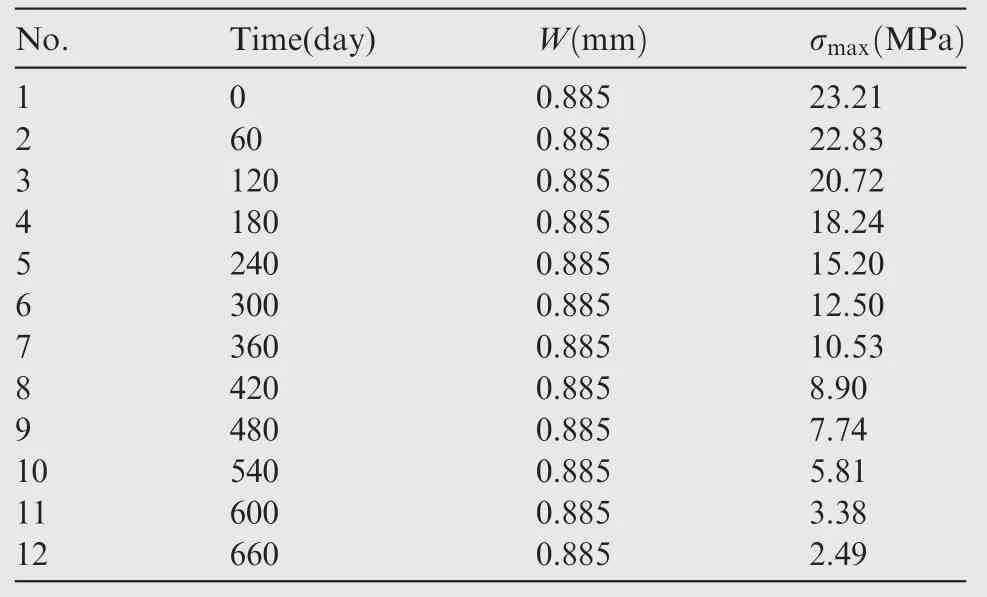
Table 4 Results of finite element simulation at different times.
4.3. Discussion
4.3.1. Verification of accuracy
According to the results of the case study in Section 4.2, it is obvious that the sealing reliability under the two statuses decreases with time, and the sealing reliability in the nonworking status is greater than it is in the working status.It also conforms to the law reflected by the leakage rate model.From the viewpoint of time period,the sealing reliability in the working status began to decline after the 60th day, and basically decreased to 0 after the 480th day. In the non-working status,the sealing reliability will not begin to decrease until the 120th day,and will decrease to 0 on the 540th day.Therefore,we can conclude that the ageing of the rubber material is the main reason for the deterioration of the sealing performance, and sealing failure will occur when the actual leakage rate becomes greater than the maximum allowable leakage rate.

Fig. 7 Results of finite element model of aviation seal.
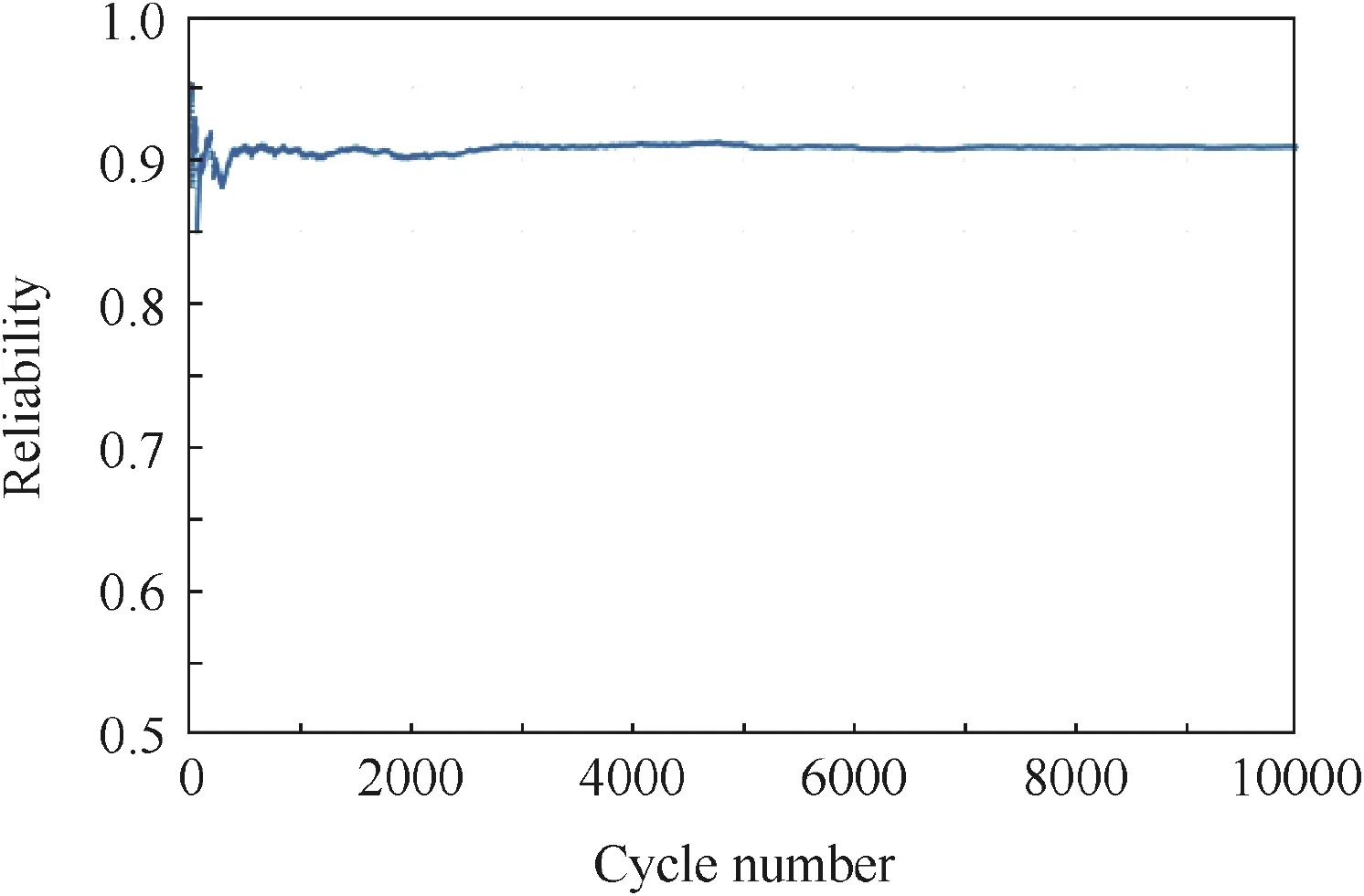
Fig. 8 Convergence curve of sealing reliability varies with cycle number.
In order to verify the accuracy of the interval uncertainty method in the case study, the maintenance records of the gas steering gear were employed. We judge whether the gas steering gear is well sealed by monitoring the pressure of the steering chamber, and the pressure we measured will be accurate owing to the developed pressure measuring instrument. In the actual maintenance work, the leakage rate was verified every 30 days for the working status, and every 90 days for the non-working status.There are 360 days of the maintenance records with 20 steering gears in working status and 10 steering gears in non-working status. The maintenance records are listed in Tables 5 and 6 (more intensive verification between the 180th and 270th day). According to this, the sealing reliability of steering gears forecasted by this method is slightly lower than the actual situation, which is consistent with the concept of system safety,57that is, the predicted value should let the systems run with a certain degree of safety margin.Therefore,there is reason to believe that the use of the interval uncertainty method and multidimensional response surface,can be a better way to predict the sealing reliability of steering gears, and the prediction results can be accepted by the engineering practice.
4.3.2. Sensitivity analysis of some variables
According to the description in Section 4.1 and Section 4.2 and the optimization methods that are currently easy to use, the temperature T related to the working environment and the height of the hole H related to the surface roughness are chosen to optimization because they are highly discretized.Among them,T can be optimized by improving the heat dissipation of the steering gear, and H can be optimized by improving the machining accuracy. If they are optimized, it is possible to improve the sealing reliability of the aviation seal.
Under the premise of keeping other parameters unchanged,the control groups of T and H were set separately. Then, the sealing reliability was calculated and the results are depicted in Figs.10 and 11.The results show that the sensitivity of temperature to reliability is small, while the sensitivity of surface roughness to reliability is large.Although the reduction in surface roughness is costlier,the improvement in reliability is significant.A suitable balance between cost and reliability should be found,to determine the scope of the use of this optimization method. Here, the optimization is only discussed from a technical perspective, and thus, under the premise of ignoring the increased costs. Therefore, it is not advisable to reduce the working temperature of the steering gear by improving the heat dissipation, but we can improve the sealing reliability of the steering gear by improving the machining accuracy of the rigid body in contact with the aviation seal.
4.3.3. Adaptability of this method
According to the interval uncertainty method and case study,this method represents small-sample parameters in terms of intervals and, in combination with the limit state equation and multidimensional response surface, the reliability can be calculated by solving the ratio of safety domain to total area.This paper calculates the sealing reliability of aviation seal intwo statues by combines the sealing reliability model from the sealing failure mechanism, the mathematical model of smallsample uncertainty variables, and the leakage threshold using in the performance reliability method. After comparing with the actual situation, the accuracy of the calculated results has also been verified.
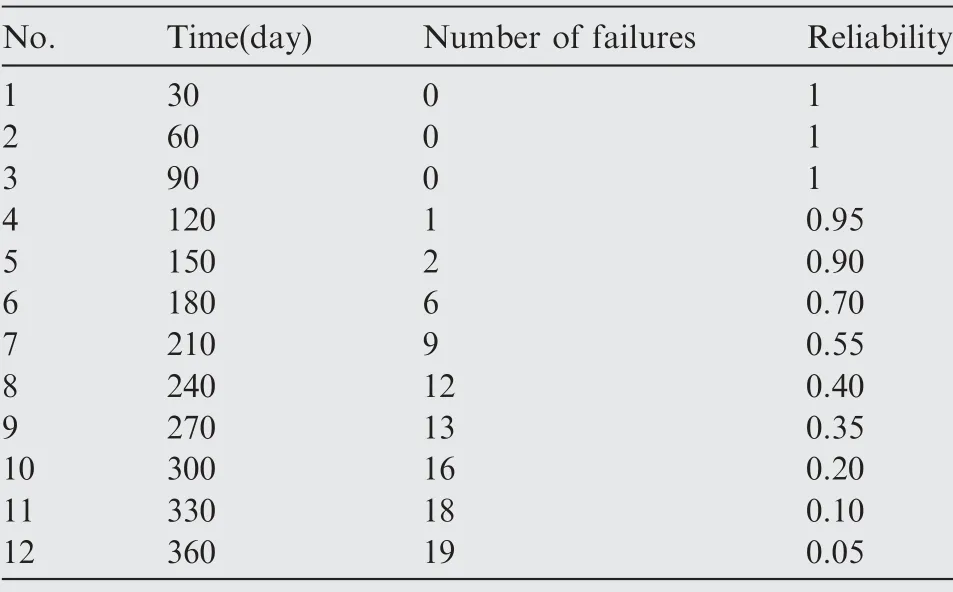
Table 5 Maintenance records of steering gears with gas leakage under working status.
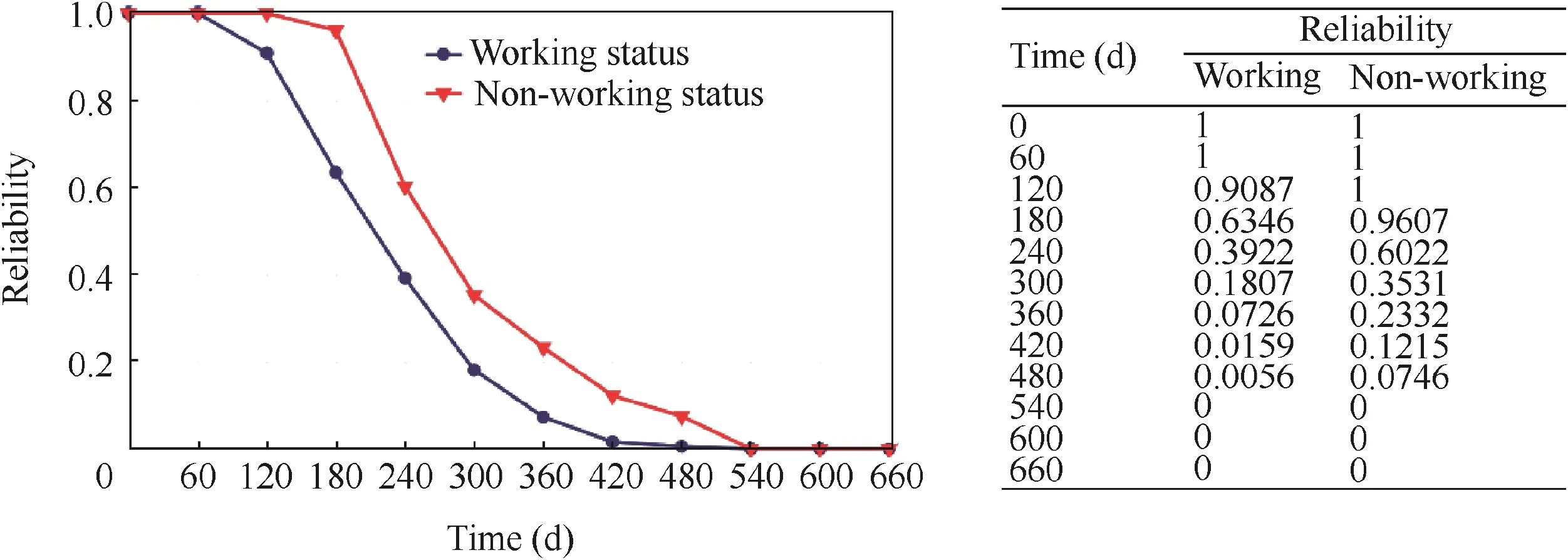
Fig. 9 Sealing reliability of aviation seal in working and non-working statuses.
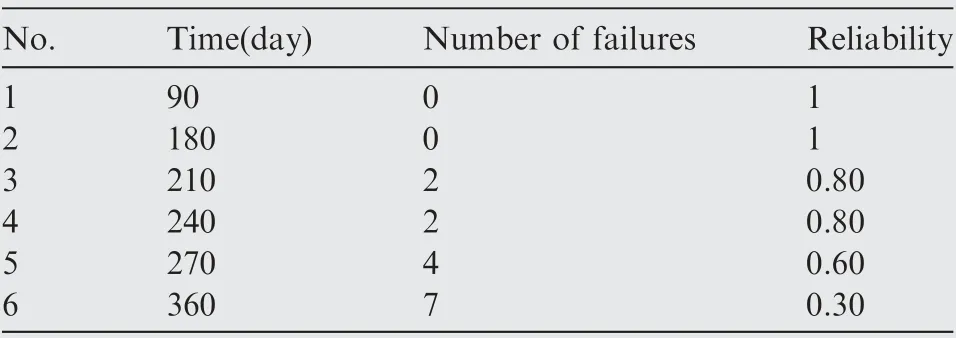
Table 6 Maintenance records of steering gears with gas leakage under non-working status.

Fig. 10 Temperature sensitivity curve.

Fig. 11 Surface roughness sensitivity curve.
This method can not only accurately model small-sample parameters, but also calculate reliability under a multidimensional and nonlinear condition. Multidimensional and smallsample parameters often appear in engineering practice and the relationship between these parameters is always nonlinear.The interval uncertainty method can model these multidimensional and small-sample parameters accurately and quickly and, in combination with multidimensional response surface,the reliability can be obtained.
Thus, the interval uncertainty method and multidimensional response surface proposed in this study can be used as a feasible method to calculate the reliability when facing multidimensional and small-sample parameters.
5. Conclusions
(1) By analyzing the failure mechanism of the aviation seal,the leakage rate model was obtained. It is known that the factors influencing the sealing performance are multidimensional and nonlinear. There are six discrete variables and six constant variables on the leakage rate model, and the description by probabilistic methods is difficult owing to the small-sample parameters.
(2) With reference to the limit state equation from the structural reliability theory, an interval uncertainty method was proposed to model the small-sample parameters and the sealing reliability. Besides, because of the computational complexity of the sealing reliability, the multidimensional response surface was used, and its feasibility and accuracy was verified.
(3) According to the case study and discussion, the method proposed in this study predicts that the sealing reliability of the steering gear is slightly lower than the actual situation, which satisfies the safety margin requirements,thus, this method can be used to predict the repair and replacement cycle of the steering gear.
(4) Only from a technical point of view, a reduction in the working temperature of the steering gear does not significantly improve the sealing reliability, according to the results of the method, the sealing reliability of the steering gear can be significantly enhanced by improving the machining accuracy of the surface.
(5) The interval uncertainty method and multidimensional response surface realizes the application of smallsample uncertainty analysis in reliability analysis, and also provide a feasible method to solve the inconvenience of reliability calculation with multidimensional and small-sample parameters. Based on this method,further follow-up works, such as optimization, maintenance, can be developed in depth.
Acknowledgements
This work was supported in part from the Fundamental Research Project funded by the Ministry of Industry and Information Technology of the People's Republic of China.
杂志排行
CHINESE JOURNAL OF AERONAUTICS的其它文章
- Heading control strategy assessment for coaxial compound helicopters
- An adaptive integration surface for predicting transonic rotor noise in hovering and forward flights
- An algorithm to separate wind tunnel background noise from turbulent boundary layer excitation
- Simulation of mass and heat transfer in liquid hydrogen tanks during pressurizing
- Leakage performance of floating ring seal in cold/hot state for aero-engine
- Six sigma robust design optimization for thermal protection system of hypersonic vehicles based on successive response surface method
